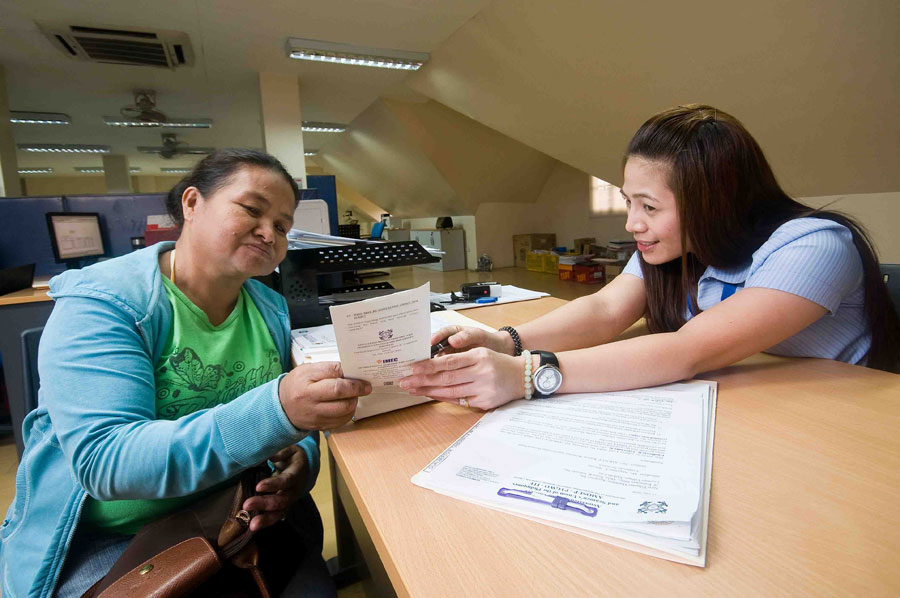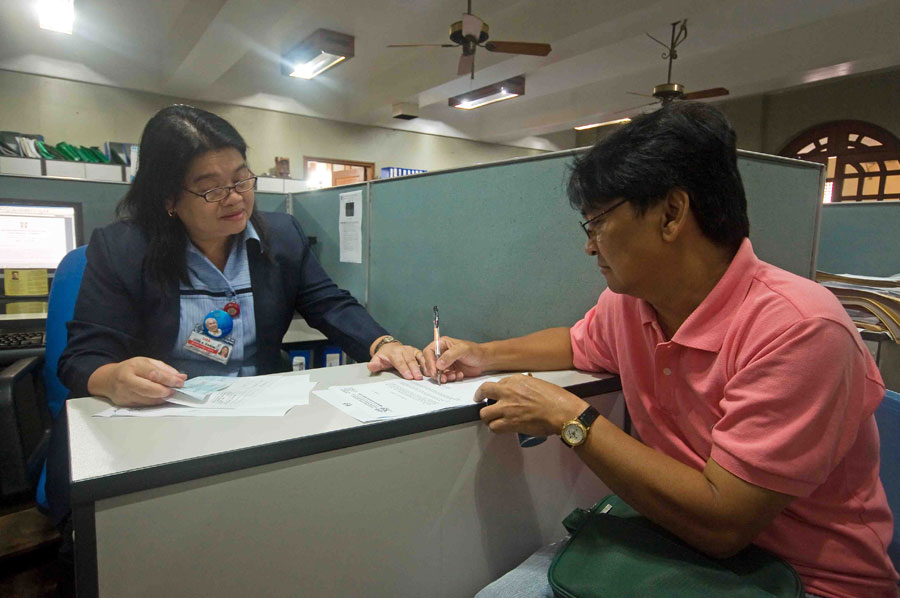
This section of the AMOSUP Seamen’s Hospital provides short and long term rehab medicine services by specially trained physical therapists and physiatrists for union members and their dependents
Equipped with knowledge, skills and expertise, the AMOSUP Seamen’s Hospital’s Rehabilitation Medicine Department can bring you back into motion.
The Department believes in the concept that the patient is in itself the most important factor in the setup of carrying out a clinical healthcare program. The care being provided to the patients has to be customised to meet their individual needs and goals. It needs a strong emphasis on detailed evaluation and education as it is important that the patient understands the cause, treatment and prevention of his or her condition.
Dedicated to provide AMOSUP union members and their dependents with excellent rehabilitation services, the Department also envisions to be an internationally accredited facility. Apart from its well-trained and dedicated professionals, the department is complete with its own healthcare program and equipment.
With the leadership of department chair Dr. Editha A. Tuason, along with other consultants namely, Dr. Rodolfo R. Rosales, Dr. Narciso T. Diokno, and Dr. Michael Jeremy B. Roque, the department is on track with its goal to serve patients and clients with the care they deserve.
The Rehabilitation Medicine Department is subdivided into four sections: Out-Patient, Acute Care Setting, EMG-NCV and EEG Section, and Weight Management Unit. Consultants and physical therapists work together with the different sections of the department for a holistic approach of treatment for the patients and clients.
Acute Care Setting
The hospital provides short term and long term acute rehabilitation medicine services offered by specially trained physical therapists and physiatrists to patients who will benefit from an intensive care rehabilitation program.
In general, patients admitted in this setting are those with debilitating disease and traumatic injury following certain types of surgery or multiple medical issues who are having difficulty or inability performing Activities of Daily Living (ADL) as a result of their illnesses.
Rehabilitation programs are, but not limited to, pre and post amputation, brain and spinal cord injury, stroke and other neurological, cardiopulmonary, orthopedic conditions. Patients receive a minimum of an hour of physical therapy per day, up to six days a week depending on their needs and expected to make functional gains and medical improvement within a reasonable time frame.

Out-Patient
Continuity of care is essential for patients who had undergone acute care rehabilitation. Bulk of patients of the department came from OPD referrals and discharged acute care rehabilitation patients.
The nature of cases handled in the Rehabilitation Medicine deals more on the industrialise type which primarily affects the seafarers. And as part of their benefits, the dependents of the seafarer are also entitled to their physical therapy services. OPD patients are accommodated if referral for physical therapy treatment is given.
The common conditions handled in the department include orthopedic cases such as fractures, scoliosis, back pain, musculoskeletal cases such as shoulder pain, tendinitis, sports-related conditions such as ankle sprain, muscle strain, neurologic conditions. Such conditions also include cerebrovascular disease, spinal cord injury, pediatric conditions such as cerebral palsy, developmental delay, post-operative conditions such as total hip replacement, amputation, ligament reconstruction, cardiopulmonary conditions and oncologic conditions.
An average of 30-40 patients a day are handled in the rehab facility which includes outpatient and inpatient. The Rehabilitation Medicine Department’s treatment areas are well equipped with hydrotherapy modalities, electrotherapy, gym area and gait training equipment. To assure that all patients from different areas are properly referred to the department, the department follows a specific procedure for outpatient, inpatient and walk-in patients.
EMG-NCV and EEG Section
Treatment isn’t possible without proper diagnosis. And to properly come up with a diagnosis, patients are also being accommodated for Electromyography (EMG) and nerve conduction velocity (NCV) and electroencephalogram (EEG) tests once referred to Rehabilitation Medicine Department.
Electromyogram (EMG) is a test used to record the electrical activity of the muscles and frequently performed when patients have unexplained muscle weakness. It is composed of nerve conduction study (NCV) which measures how well and how fast a nerve can send electrical signals.
These tests function as important diagnostic tools and provide vital information about the conditions of patient’s nerve and muscles. It can also detect some cause of problems such as muscle weakness, numbness, spasms, paralysis or pain. It can also determine if the problem involves the muscle, nerve, spinal cord or brain. In addition, these tests can be used to isolate the level of nerve irritation or injury.
Electroencephalogram (EEG) test is used to measure the electrical activity of the brain via electrode applied to the scalp. This procedure is safe and painless. It can be performed without the need of shaving your hair. This brain wave test can help diagnose a number of conditions such as epilepsy, sleep disorders or brain tumors. The EEG recordings are interpreted by a neurologist.
Weight Management Unit
Following the trend for wellness, weight management unit was added in the department. This particular section provides program for cardio-respiratory training, weight loss and weight gain.
The department’s clients, seafarer members in particular, are required to maintain a fit body before boarding. This is the section that caters to their needs to lose or gain some weights and provides advice to maintain their shape while on board.
Not limited to the members, this section is also open for dependents, employees and pay patients who opted to be fit and healthy. With a wide range of program specifically tailored for the needs of the clients, their goals are now within reach.

Keeping up with the trends
The Rehabilitation Department team ensures up-to-date evidence-based practice to help the patients back into motion. This is through continuing professional education by attending seminars and workshops and subscription to latest international journals. The department ensures to provide the best available services, and achieve the optimal level of symptoms-free and functional recovery of the patients. The rehabilitation facility and the gym are fully-equipped to provide individualised programs on maintaining, restoring, and improving flexibility, strength, and endurance that are specific to the physical conditions of each patient.
Individualised exercise program
The staff of physical therapists provides more than just application of modalities. Movement experts as they are known, PTs of this department are specially trained in designing individualised therapeutic exercise program.
The needs of each patient are thoroughly evaluated through identifying the level of function as to the range of motion, muscle strength, joint integrity and quality of functional activities. The assessment is then interpreted, and based on these deficits, goals are established to return safely and actively to participation. A continued assessment of the exercise program occurs throughout the rehabilitation. The process is dependent on the patient’s progress, adaptation, and adherence to the program.
Athletic training
The Hospital’s Rehabilitation Department also caters to union members who are physically active including their dependents who wish to improve their athletic performance. The Department provides athletic training to those who seek to improve proper guidance in enhancing their form during exercise and whole body function.
Athletic training is not limited to competitive athletes but is readily available to every AMOSUP members and their dependents. The Rehabilitation Department not only provide techniques in how to improve their patients’ performance but also provide strategies on how injuries can be prevented before, during or after an activity.
Patient education
As the saying goes “Prevention is better than cure”. The Department goes out of the four corners of the room and conducts lay forum seminars exclusively to AMOSUP members and their dependents. Through these lay forum seminars the Rehabilitation Department staffs impart knowledge about different concepts that is within the scope of their profession.
Center for education
The department also takes part in the advancement of the physical therapy profession by providing training programs to the next generation of professionals through the Clinical Internship Program.
The institution is duly recognised by the Commission on Higher Education (CHEd), and all the physical therapists are well-trained clinical instructors of Outcomes-based Clinical Education (OBCE), and are members of the Philippine Physical Therapy Association (PPTA).







